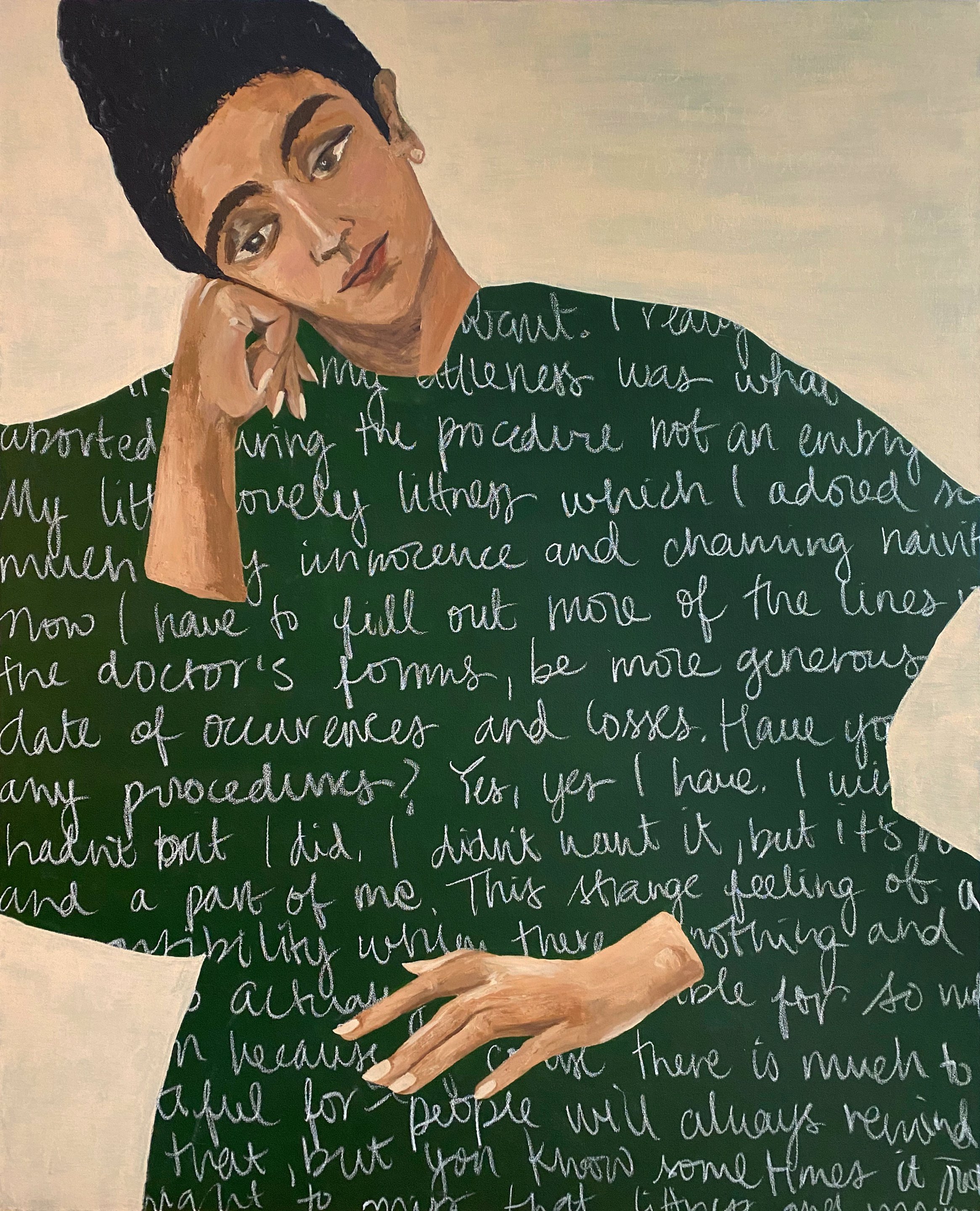
At the Artnet Gallery Network, we make it our goal to discover new artists each and every month, searching through the thousands of talented names on our website and selecting a few we find particularly intriguing right now.
This March, we’re impatiently awaiting spring (and gallery openings) with artists exploring photography’s changing significance, family histories, and more.
Lal Batman at Anna Laudel, Istanbul
Lal Batman, Fill The Gaps In A New Story (2021). Courtesy of Anna Laudel.
Istanbul’s Anna Laudel Gallery is currently presenting “Exposé,” a solo exhibition of works by Turkish artist Lal Batman. The wide-ranging show encompasses oil paintings, digital illustrations, holograms, NFTs, video art, and more. In these works, Batman explores the ways in which digital platforms contribute to socio-cultural changes, and here grapples with the concept of the metaverse and how digital communication technologies are increasingly affecting our everyday lives. But rather than simply demystifying the sheen of our online personas, she delves into how these fascinations tap into eroticism and age-old realities of artistic voyeurism.
Rami Maymon at Schonfeld Gallery, Brussels
Rami Maymon, Kad Alras VIIII (2018). Courtesy of Schönfeld Gallery.
Israeli artist Rami Maymon creates works that meld media, including photography, video, and installation, exploring ideas of originality and authenticity. These works explore the relationships between the viewer’s eye, art, and meaning. In a recent series, Maymon used cyanotypes, with their defining blue hues, to create images resembling ancient Greek vases and artifacts. These works tap into changes in photography, as well as polarities and tension between two-dimensionality and three-dimensionality.
Maya Varadaraj at Aicon Contemporary, New York
Maya Varadaraj, Jay in Pink, Not Knowing the Road Ahead (2022). Courtesy of Aicon Contemporary.
Artist Maya Varadaraj’s figurative paintings tap into her experiences as a South Asian woman brought up in a Hindu family, and how various biologies, societies, histories, and families inform womanhood. Her works are closely linked to Eastern philosophies and ideas of karma. Having experienced a deep familial loss in the past year, the artist mined family photographs, selecting particular moments she thought might have been catalysts for her life today, which she used as the basis of her paintings on view in her current exhibition, “Accident of Birth.”
“Images of my parents as children, a survey of female family members, my grandfather active and alive: I pull these characters out of their setting and reposition them to serve me in my search for meaning,” wrote the artist in a statement.
Astrid Styma at Setareh X, Düsseldorf
Astrid Styma, Underbelly (2021). Courtesy of Setareh X.
In her second solo exhibition with Setareh X, artist Astrid Styma has created a world both pristine and troubling. Many of Styma’s paintings are of nude female bodies, which have an aura of mannequins, robots, or digital avatars, rather than living, breathing women. In these works, the figures’ faces are always turned away from the viewers, creating a sense of anonymity. In other works, Styma has painted a pair of ears or eyes onto canvases that mimic their shapes, a gesture that both conjures trompe l’oeil paintings and dystopian sci-fi. What’s most striking about Styma’s paintings is their peculiar palette of bluish grays and blush tones, which impart an eerie coolness to her figures and forms, granting the viewer a disquieting sense of isolation and loneliness.
Yongchul Kim at Galerie Thomas Fuchs, Stuttgart
Yongchul Kim, Begegnung, Frau mit Schwan (2022). Courtesy of Galerie Thomas Fuchs.
In dreamlike paintings, Korean artist Yongchul Kim presents figures and objects in strange constellations that seem laden with complex symbolism and hidden meanings. In one image, a knight, seemingly plucked from the imagination of Don Quixote, stands in a stage-like setting. In another, a woman in a brilliant red coat is holding a swan. Yongchul Kim’s colors are bold, deeply saturated, and create waves of emotion and sensation. These strange compositions evoke the experience of early childhood memories, lived experiences, dreams, and fleeting visions.